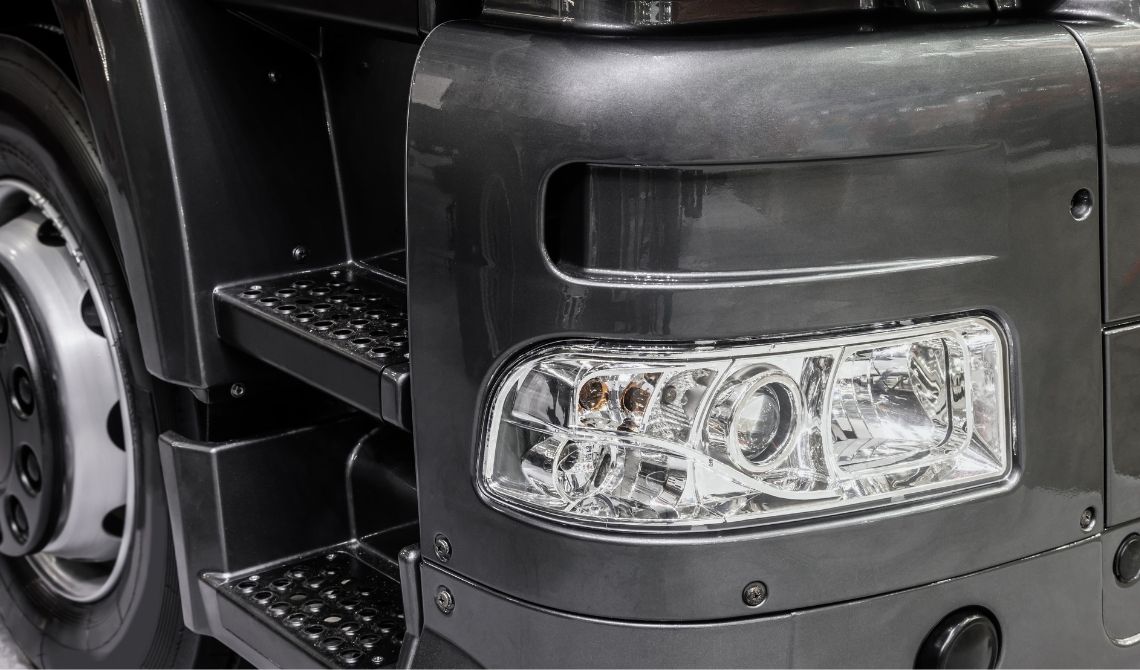Truck Body Parts bumpers, often overlooked in their significance, serve as the frontline defenders of these robust vehicles. This comprehensive exploration delves into the crucial role of truck bumpers, exploring their functions, types, materials, technological advancements, and the impact they have on safety and aesthetics in the world of trucks.
I. The Core Functions of Truck Bumpers:
- Collision Protection: Truck bumpers play a pivotal role in shielding the vehicle from collisions. Positioned at the front and rear, they absorb impact energy, minimizing damage to the truck’s main structure and reducing the risk of injury to occupants.
- Pedestrian Safety: Beyond safeguarding the truck, bumpers contribute to pedestrian safety. Their design aims to mitigate the severity of impact in the unfortunate event of a collision between a truck and a pedestrian.
- Aesthetic Enhancement: Truck bumpers are integral to the overall aesthetics of the vehicle. Beyond functionality, they contribute to the vehicle’s visual appeal, providing manufacturers with opportunities to showcase brand identity and design innovation.
II. Types of Truck Bumpers:
- Standard Bumpers: Standard bumpers, common in many trucks, are designed to meet basic safety requirements. They provide fundamental protection in low-impact situations and often serve as a canvas for customizations.
- Heavy-Duty Bumpers: Heavy-duty bumpers, prevalent in commercial and off-road trucks, are built for robust performance. Constructed from durable materials such as steel or aluminum, these bumpers offer enhanced protection in demanding conditions.
- Off-Road Bumpers: Off-road trucks often feature specialized bumpers designed for rugged terrains. These bumpers provide additional ground clearance, house winches for recovery, and offer reinforced protection against impacts and debris.
- Step Bumpers: Common in pickup trucks, step bumpers serve dual purposes. Beyond collision protection, they feature integrated steps, facilitating easier access to the truck bed.
- Customized Bumpers: With the growing trend of customization, many truck owners opt for personalized bumpers. These can range from stylized designs to bumpers equipped with additional features such as LED lighting, grille guards, or tow hooks.
III. Materials Used in Truck Bumpers:
- Steel Bumpers: Steel bumpers are known for their durability and strength. Common in heavy-duty trucks, they provide excellent collision protection but may add weight to the vehicle.
- Aluminum Bumpers: Aluminum bumpers offer a lightweight alternative without compromising strength. They are resistant to corrosion, making them an attractive choice for truck owners seeking durability with reduced weight.
- Composite Bumpers: Composite materials, combining fibers and resins, are gaining popularity in bumper construction. These materials provide a balance between strength and weight reduction, contributing to improved fuel efficiency.
IV. Technological Advancements:
- Crash Avoidance Sensors: Modern truck bumpers are equipped with crash avoidance sensors that work in conjunction with other safety systems. These sensors can trigger pre-collision warnings, automatic braking, or steering interventions to mitigate the impact of a potential collision.
- Energy-Absorbing Materials: Advanced materials, such as polymer blends and reinforced plastics, are incorporated into bumpers to enhance their energy-absorbing capabilities. This helps dissipate impact forces more effectively, reducing the severity of collisions.
- Integrated Camera and Sensor Systems: Bumpers now integrate cameras and sensors for improved visibility and awareness. These systems aid in parking, maneuvering, and detecting obstacles, enhancing overall safety.
V. Impact on Fuel Efficiency:
The weight and design of truck bumpers can influence a vehicle’s fuel efficiency. While heavy-duty bumpers provide robust protection, they may contribute to increased fuel consumption. Manufacturers are continually innovating to strike a balance between durability and fuel efficiency.
VI. Compliance with Safety Standards:
Truck bumpers must adhere to safety standards set by regulatory bodies such as the National Highway Traffic Safety Administration (NHTSA). These standards ensure that bumpers meet specific criteria for collision protection, pedestrian safety, and overall vehicle integrity.
VII. Bumper Maintenance:
Regular maintenance of truck bumpers is crucial to ensure their effectiveness and longevity. Cleaning, inspecting for damage, and addressing any issues promptly contribute to the overall safety and appearance of the vehicle.
VIII. Conclusion:
Truck Body Parts bumpers, often overshadowed by larger components, stand as silent sentinels at the forefront of road safety. Beyond their fundamental role in collision protection, they evolve with technological advancements, materials innovation, and customization trends. From heavy-duty defenders to personalized statements, truck bumpers play a multifaceted role in defining the character and safety of these formidable vehicles on the road. As we navigate the highways, let’s recognize the vital role these front-line defenders play in ensuring both the aesthetic appeal and safety of our trucks.
For detailed information: Truck Body Parts Bumpers


